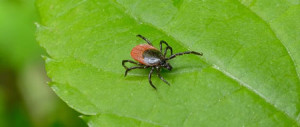 Health officials across Massachusetts are bracing for a particularly bad season for tick-borne disease. Cathleen Drinan, health agent for both Plympton and Halifax, emphasizes personal protection and education regarding diseases spread by ticks. In our region, cases of Rocky Mountain Spotted Fever, Babesiosis, and Human Granulocytic Anaplasmosis (HGA) were reported in recent years and 58 cases of Lyme disease and two of HGA were discovered in Halifax alone last year.
Health officials across Massachusetts are bracing for a particularly bad season for tick-borne disease. Cathleen Drinan, health agent for both Plympton and Halifax, emphasizes personal protection and education regarding diseases spread by ticks. In our region, cases of Rocky Mountain Spotted Fever, Babesiosis, and Human Granulocytic Anaplasmosis (HGA) were reported in recent years and 58 cases of Lyme disease and two of HGA were discovered in Halifax alone last year.
Mosquitos often get the most attention this time of year, perhaps because these disease carrying insects are more easily managed than ticks, which can wreck havoc on the human body as well.
Deer ticks, especially well known for carrying Lyme disease and quite a few other diseases as well, are prevalent during this time of year, and the deer population that carries the ticks are at an all-time high this summer.
The culprits aren’t always deer ticks, either, according to Drinan; dog ticks and wood ticks can also cause disease.
According to the Massachusetts Department of Public Health, there were 631 confirmed cases of Lyme Disease and 233 probable cases in 2013. June, July, and August are the highest incidence of Lyme Disease onset and the most affected age groups are youngsters age 5-9 years, and older adults between 65 to 75 years.
Ticks thrive in “brush, wooded, or grassy places.” When an animal or person walks by one of the ground or plant dwelling ticks, they often hitch a ride. The ticks are after blood, which they feast on after biting an animal or human.
Ticks usually need to be attached to their host for 24-hours for Lyme disease to develop. Symptoms in humans typically include a round rash for up to a month after the bite, characterized by a clear area in the center, yet this rash does not always develop. Vague flu-like symptoms are also present in the early stages of the disease.
Even if symptoms lessen without treatment, the disease may not have cleared completely, so early treatment with antibiotics is necessary to prevent more serious problems from developing months or even years later. These include serious joint, nervous system, and heart problems that can be permanent. Meningitis, an often deadly swelling of the membrane covering the brain, can even develop.
Patients with a “classic” donut-shaped rash are easy to diagnose, but otherwise most of the infected will need a blood test to confirm the Lyme Disease diagnosis.
Data from the Centers from Disease Control and the DPH, shows Bristol and Plymouth Counties, along with Cape Cod and the Islands have the highest incidence rates in the State.
The Commonwealth, after a special report was commissioned in 2013 by the General Court, is taking both short and long-term approaches to this public health menace, hoping to return tick-bite rates back to those of 30-50 years ago in the next 25 years.
Vaccination, environmental modes of intervention, deer management, and education on personal protection, are some of the goals set forward in the report. “The approaches are slow and steady, needing to establish solid frameworks conceptually via education and by promoting environmental management. After initial outlay of funds, resources, and effort (ramp-up phase) only minor input is required to maintain ‘control.’”
The best ways to protect yourself from tick bites are to avoid areas where ticks live. If this is not possible, which it often isn’t, wearing long sleeves and tucking pants into socks are essential. Spraying shoes and legs with insect repellents (make sure they are effective against ticks by reading labels carefully), checking for ticks frequently, and removing ticks quickly with tweezers without squeezing or twisting are all good prevention measures, according to the DPH.
Drinan has a favorite tick resource site with comprehensive information about all types of tick-borne disease and prevention tips: http://www.tickencounter.com.
“It is very important for people to educate themselves on the seriousness of this and to use all the personal protection measures they can,” according to Drinan.
• For further information, the DPH has a website dedicated to the subject: http://www.mass.gov/eohhs/gov/departments/dph/programs/id/epidemiology/ticks/.
• Contact a doctor or nurse if you think you are ill sooner rather than later.
• All local Boards of Health have information on ticks, tick-borne diseases, and disease prevention methods. They are a good resource.